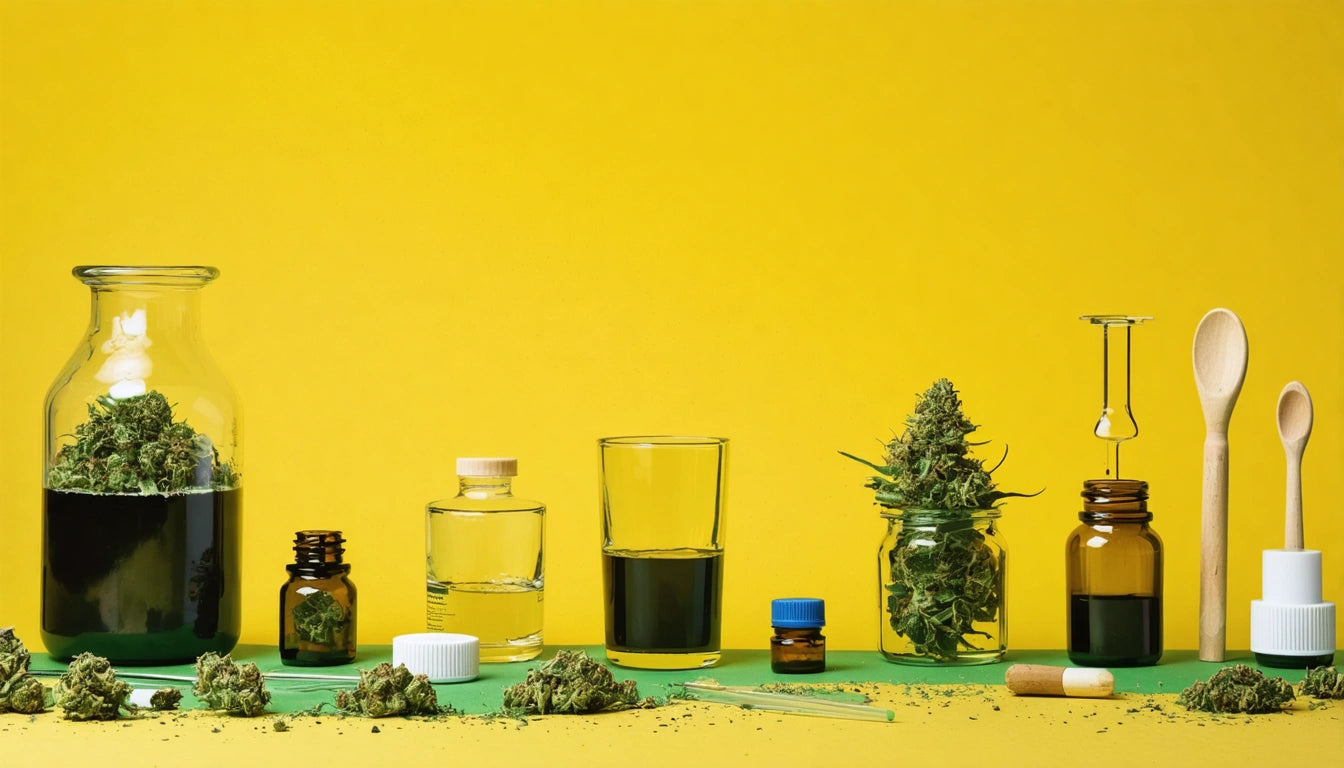Table of Contents
- Understanding Cannabis Effects: Duration and Intensity
- Sobering Up Techniques: How to Reduce Cannabis Effects
- Enhancing Your Experience: How to Get More or Super Stoned
- Managing Side Effects: How to Avoid the Munchies When Stoned
- Social Navigation: How to Hide Being Stoned or Act Naturally
- Safety Considerations: Responsible Consumption Practices
- Debunking Common Myths and Misconceptions
Navigating the Stoner Experience: Tips, Effects, and Myths
Cannabis consumption creates a unique experience that varies widely between individuals. Whether you're wondering how long being stoned lasts or searching for ways to sober up quickly, understanding the fundamentals of cannabis effects can help you navigate your experience more effectively. This guide explores the duration, intensity, and management of cannabis effects, along with practical tips for both enhancing and reducing your high.
Understanding Cannabis Effects: Duration and Intensity
A common question among cannabis users is "how long does being stoned last?" The duration typically ranges from 2-6 hours for smoking or vaping, while edibles can last 6-8 hours or longer. Several factors influence this timeline:
- Consumption method (inhalation vs. ingestion)
- THC concentration
- Individual tolerance
- Metabolism
- Body weight
- Empty vs. full stomach (particularly for edibles)
Understanding the differences between being stoned, high, or drunk can help you anticipate effects and duration. Cannabis affects the endocannabinoid system differently than alcohol affects the central nervous system, resulting in distinct experiences and recovery periods.
Sobering Up Techniques: How to Reduce Cannabis Effects
If you're wondering how to not be stoned anymore or how to get unstoned quickly, there are several approaches that may help reduce the intensity of cannabis effects:
Hydration and Nutrition
Drinking water helps flush your system and may alleviate dry mouth. Consuming foods rich in terpenes like lemons, pine nuts, or black pepper can potentially counteract THC effects through the "entourage effect."
Physical Activity
Light exercise increases blood flow and may help metabolize THC faster. A brisk walk or gentle stretching can be particularly effective.
Cold Shower
The shock of cold water can increase alertness and potentially reduce the feeling of being stoned.
While these methods may help you feel more functional, it's important to note that THC will naturally metabolize over time. The only guaranteed solution for how to sober up from being stoned is patience.
Enhancing Your Experience: How to Get More or Super Stoned
For those seeking a more intense experience, several methods can potentially enhance cannabis effects:
Consumption Techniques
If you're exploring how to get really stoned or how to get super stoned, consider these approaches:
- Try a tolerance break to reset your endocannabinoid system
- Use a higher potency product or concentrate
- Consider different consumption methods like dabbing
- Combine consumption methods (with caution)
Activities that complement and potentially enhance your experience include listening to music, creating art, or engaging in sensory-rich experiences.
Managing Side Effects: How to Avoid the Munchies When Stoned
The munchies are a common side effect of cannabis use. If you're wondering how to not get munchies when stoned, these strategies may help:
- Eat a satisfying meal before consuming cannabis
- Stay hydrated throughout your experience
- Prepare healthy snacks in advance
- Choose strains lower in THC or higher in THCV (which may suppress appetite)
- Distract yourself with engaging activities
Understanding the science behind cannabis-induced hunger can help you develop effective strategies for how to avoid the munchies when stoned. THC activates receptors that trigger hunger signals, even when you're physically full.
Social Navigation: How to Hide Being Stoned or Act Naturally
For situations where discretion is important, knowing how to hide being stoned can be valuable:
- Use eye drops to reduce redness
- Practice mindful breathing to stay centered
- Prepare conversation topics in advance
- Stay hydrated to avoid dry mouth
- Avoid overcompensating or drawing attention to yourself
On the flip side, if you're curious about how to act stoned or how to look stoned (perhaps for theatrical purposes), common behaviors include delayed reactions, increased laughter, red eyes, and relaxed body language. However, it's always best to be authentic rather than perpetuating stereotypes.
Safety Considerations: Responsible Consumption Practices
Responsible cannabis use involves several important safety considerations:
Storage and Access
Proper storage is crucial for preventing accidental consumption. Safety regulations for child-resistant packaging help reduce the risk of accidental ingestion, especially with edibles that may look appealing to children. Always store cannabis products securely and out of reach of children and pets.
Dosing
Start with low doses and gradually increase as needed, particularly with edibles which can have delayed and potent effects.
Environment
Choose safe, comfortable settings for consumption, especially when trying new products or methods.
It's worth noting that questions like "how to get a dog stoned" reflect dangerous misconceptions. Animals process cannabinoids differently than humans, and exposing pets to THC can cause serious health issues and distress. This practice should be avoided entirely.
Debunking Common Myths and Misconceptions
The cannabis community is rife with myths that deserve clarification:
Myth: You Can Instantly Sober Up
While certain techniques may help reduce the intensity, complete sobriety only comes with time as your body metabolizes THC.
Myth: All Cannabis Creates the Same Experience
Different strains, consumption methods, and individual factors create widely varied experiences. Understanding these nuances helps set realistic expectations.
Myth: You Can't Tell If Someone Is Stoned
While wondering how to tell if you're stoned is common for beginners, physical signs like red eyes, altered speech patterns, and changed behavior are often noticeable, though some experienced users may show fewer obvious signs.
By understanding both the science and practical aspects of cannabis consumption, you can make informed decisions that enhance enjoyment while minimizing unwanted effects. Whether you're looking to intensify or reduce your experience, the key lies in knowing your body, choosing appropriate products, and practicing moderation.











Leave a comment
All comments are moderated before being published.
This site is protected by hCaptcha and the hCaptcha Privacy Policy and Terms of Service apply.